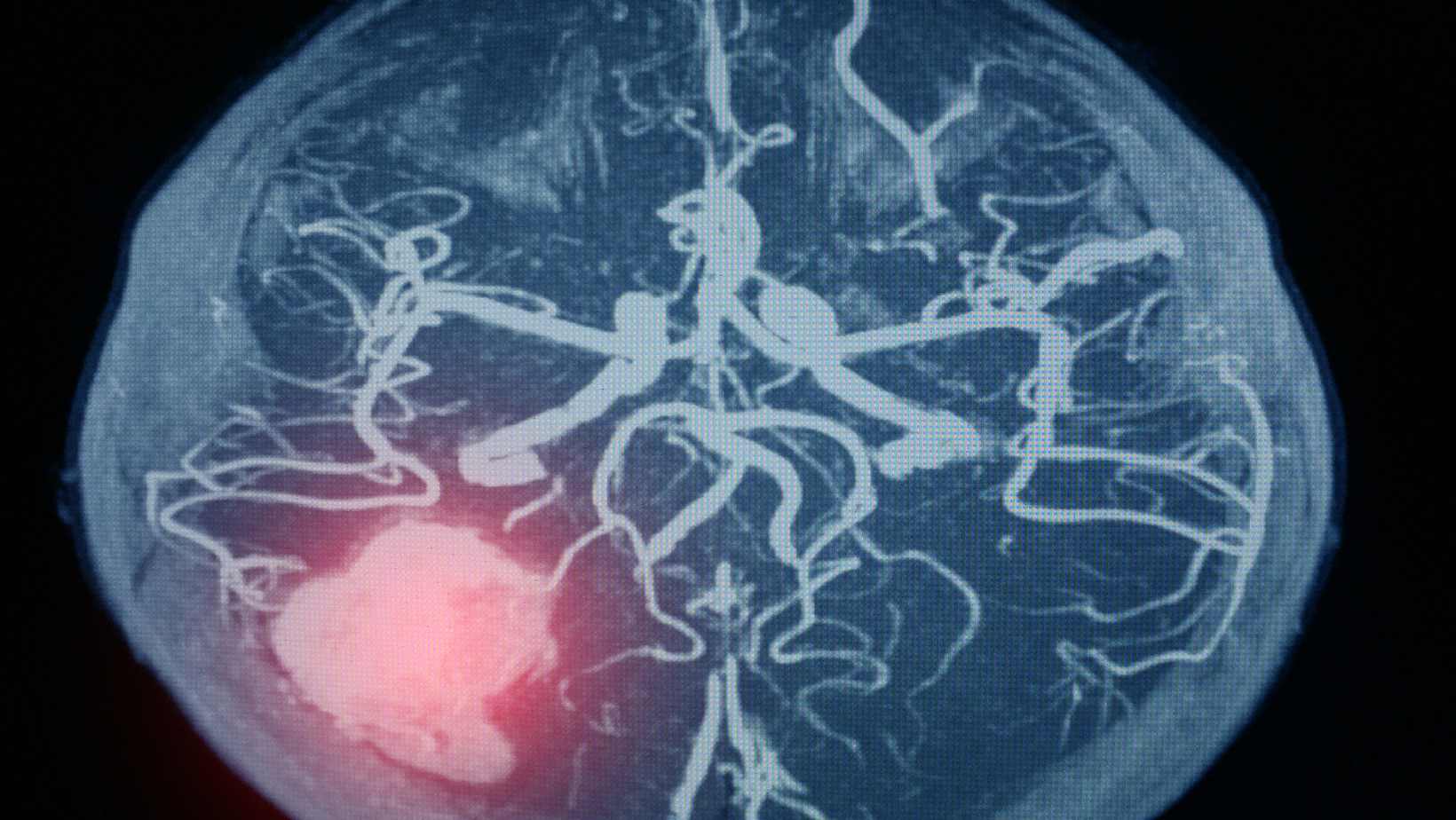Repairing brain aneurysms. Let’s begin by understanding what a brain aneurysm is. Picture a tiny balloon popping up in one of the blood vessels in your brain. This is essentially what an aneurysm looks like. It’s a weak spot on the blood vessel wall that bulges out, and if it bursts, it can lead to serious health problems, even life-threatening ones.
Now, how do doctors fix these aneurysms? The two primary methods are clipping and coiling. Clipping is an older technique, akin to placing a miniature clamp on the aneurysm. This method is quite straightforward but requires a surgical procedure where doctors open the skull to access the brain. It’s like putting a clip at the base of the balloon to prevent it from inflating further. This process effectively seals off the aneurysm from the blood vessel, thus preventing the risk of it bursting or re-bleeding if it had already ruptured.
The clipping method has been a cornerstone in neurosurgery for decades and is known for its effectiveness in providing a long-lasting solution. By isolating the aneurysm from the normal blood circulation, the risk of bleeding is significantly reduced, offering peace of mind and stability for the patient.
Table of Contents
ToggleWhat Is Clipping Of Brain Aneurysm?
- Like a Tiny Clamp: Clipping is like putting a tiny clamp on the balloon (aneurysm) to stop blood from getting in. This method is a bit older and involves surgery to open the skull.
- Preventing a Burst: By clipping the aneurysm, doctors prevent it from bursting or re-bleeding if it already burst once.
- A Permanent Solution: Once clipped, the aneurysm is usually fixed for good.
- Coiling: A Modern Approach to Treating Brain Aneurysms
Moving on to coiling – a more contemporary method in the Treatment Of A Ruptured Aneurysm. This technique is less invasive than clipping and has revolutionized how we approach these dangerous bulges in the brain. Unlike clipping, coiling doesn’t require opening up the skull. Instead, it involves a delicate procedure where doctors insert a thin tube (called a catheter) into a blood vessel, usually starting from the groin. They then guide this tube through the body’s network of vessels all the way to the brain and into the aneurysm.
Once the catheter is correctly positioned inside the aneurysm, doctors use it to deploy tiny coils – thin wires made of platinum or other materials – into the aneurysm. These coils are designed to fill up the space inside the aneurysm, thereby blocking blood flow into it. This reduces the risk of the aneurysm rupturing. The procedure is delicate, requiring exceptional skill and precision, as it navigates through the body’s maze of blood vessels to reach the brain.
The beauty of coiling lies in its minimally invasive nature. Patients typically experience quicker recovery times compared to clipping. However, it’s important to note that coiling may not be a one-time fix. In some cases, the aneurysm may require additional coils later on, or the coils may compact over time, necessitating further intervention. As per the latest guidelines coiling is preferred over clipping to fix brain aneurysm as patients tend to live longer and have a better outcome.
What makes coiling particularly interesting is the variety of coils available, each designed for specific scenarios and aneurysm types. In the next section, we’ll explore these different coils and how they enhance the coiling procedure’s effectiveness.
What is Coiling?
Filling the Balloon: Coiling is a newer method where doctors go through the blood vessels, reach the aneurysm, and fill it with tiny coils.
Less Invasive: This doesn’t require opening the skull. It’s done with a small tube (catheter) inserted usually from the groin.
Blocking Blood Flow: The coils block blood flow into the aneurysm, preventing it from bursting.
Exploring the Different Types of Coils in Aneurysm Treatment
In the realm of coiling for brain aneurysm treatment, the diversity of coils plays a crucial role in tailoring the procedure to each patient’s unique needs. These coils are not one-size-fits-all; instead, they come in various shapes, sizes, and materials, each with specific features and purposes. Let’s delve into the main types of coils used in aneurysm coiling.
Metal Coils
The most common type is the bare metal coil, typically made of platinum/nickel or chromium. These coils work by filling up the aneurysm, which promotes blood clotting within the aneurysm, cutting off its blood supply and preventing rupture. The platinum material is chosen for its durability, biocompatibility, and the precise control it offers during the procedure.
Coated Coils
Some coils come with a special biological or polymer coating. This coating is designed to enhance clotting within the aneurysm more rapidly and effectively than bare metal coils. The idea is to speed up the natural healing process, thereby providing a more immediate and robust seal within the aneurysm.
Flow-Diverting Stents
A more recent advancement is the flow-diverting coil. These are designed not just to fill the aneurysm but to redirect blood flow away from it. By altering the flow dynamics around the aneurysm, these coils reduce the pressure on the aneurysm wall, significantly lowering the risk of rupture. They are particularly useful in larger or more complex aneurysms where traditional coiling techniques might be less effective.
Each type of coil has its place in the toolkit of neurointerventional procedures. The choice of coil depends on various factors, including the size, shape, and location of the aneurysm, as well as the patient’s overall health and specific circumstances. The development of these diverse coils is a testament to the advancements in medical technology, offering more options and hope to patients with brain aneurysms.
Clipping vs. Coiling: Choosing the Right Treatment
When it comes to fixing brain aneurysms, the big question often is: should we go for clipping or coiling? Both methods have their pros and cons, and the choice largely depends on the aneurysm’s size, location, and shape, as well as the patient’s overall health and specific medical history. Let’s compare these two techniques to understand when one might be preferred over the other.
Clipping
Clipping is a tried-and-tested method that’s been around for decades. It involves a surgical procedure where the skull is opened to place a metal clip at the base of the aneurysm. This method is highly effective and often provides a permanent solution. It’s especially useful for certain types of aneurysms, depending on their location and shape. However, being a more invasive surgery, it comes with the risks associated with open brain surgery, such as longer recovery time and potential complications.
Coiling
Coiling, on the other hand, is less invasive. It involves threading a catheter through the blood vessels to the aneurysm and filling it with coils. This method is generally quicker to recover from and has fewer immediate risks compared to open surgery. It’s particularly advantageous for aneurysms that are hard to access surgically. However, one potential downside is that it might not be a permanent fix – some aneurysms may need additional coiling later on.
Making the Choice
The decision between clipping and coiling is made after careful consideration by a team of neurosurgeons and interventional neurologists. Factors like the patient’s age, the aneurysm’s size and position, and the presence of other medical conditions play a crucial role in this decision.
In the end, both clipping and coiling are effective ways to treat brain aneurysms. The evolution of these techniques represents a significant leap forward in neurosurgery and interventional neurology, offering hope and improved outcomes for patients with this challenging condition.

Dr Chandril Chugh
Dr. Chandril Chugh, a renowned American Board-Certified Neurologist, is just a click away. With years of global experience, he offers trusted neurological guidance online.
→ Book a consultation to discover which remedies suit your needs best.




